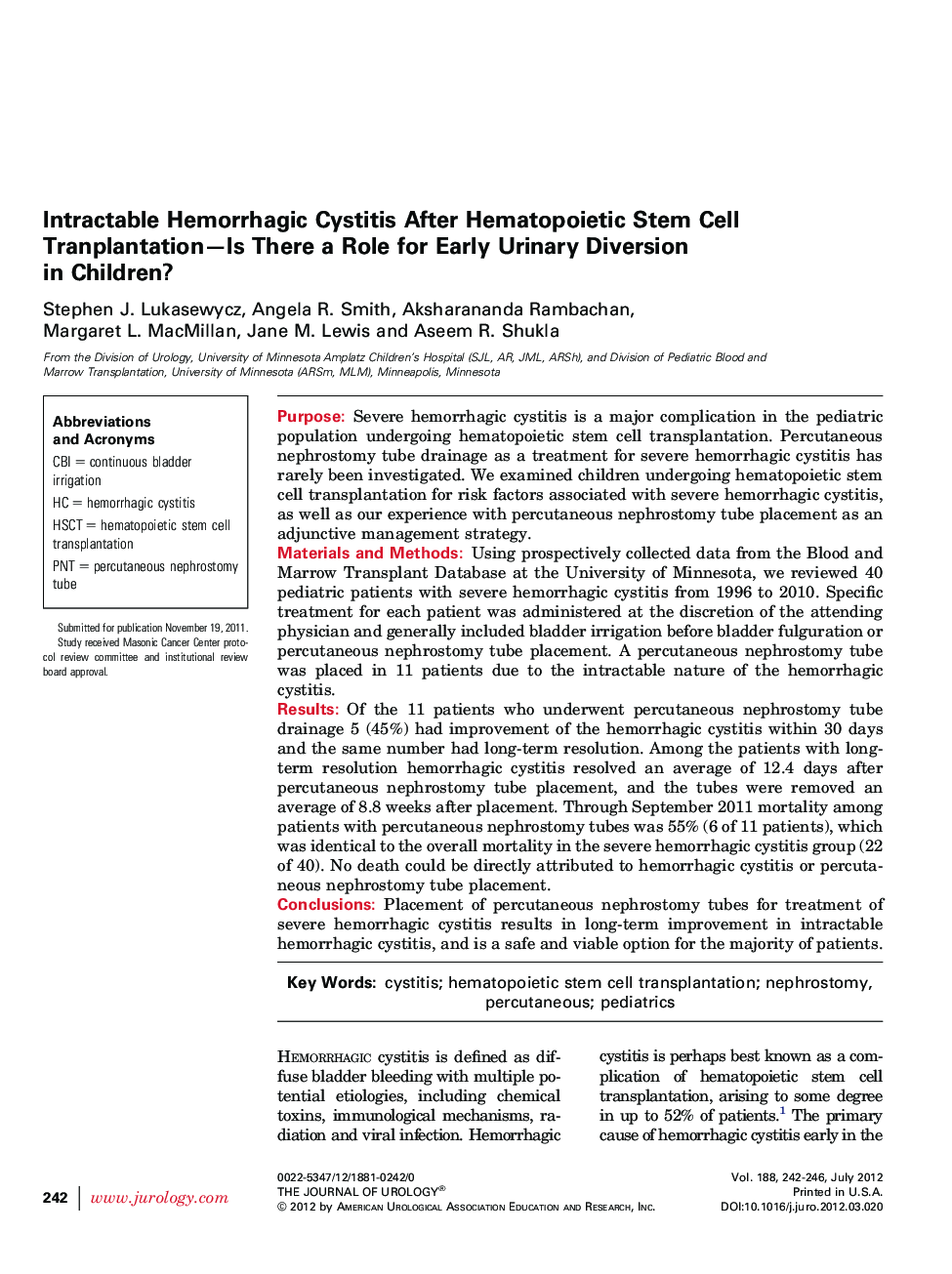| کد مقاله | کد نشریه | سال انتشار | مقاله انگلیسی | نسخه تمام متن |
|---|---|---|---|---|
| 3866733 | 1598933 | 2012 | 5 صفحه PDF | دانلود رایگان |

PurposeSevere hemorrhagic cystitis is a major complication in the pediatric population undergoing hematopoietic stem cell transplantation. Percutaneous nephrostomy tube drainage as a treatment for severe hemorrhagic cystitis has rarely been investigated. We examined children undergoing hematopoietic stem cell transplantation for risk factors associated with severe hemorrhagic cystitis, as well as our experience with percutaneous nephrostomy tube placement as an adjunctive management strategy.Materials and MethodsUsing prospectively collected data from the Blood and Marrow Transplant Database at the University of Minnesota, we reviewed 40 pediatric patients with severe hemorrhagic cystitis from 1996 to 2010. Specific treatment for each patient was administered at the discretion of the attending physician and generally included bladder irrigation before bladder fulguration or percutaneous nephrostomy tube placement. A percutaneous nephrostomy tube was placed in 11 patients due to the intractable nature of the hemorrhagic cystitis.ResultsOf the 11 patients who underwent percutaneous nephrostomy tube drainage 5 (45%) had improvement of the hemorrhagic cystitis within 30 days and the same number had long-term resolution. Among the patients with long-term resolution hemorrhagic cystitis resolved an average of 12.4 days after percutaneous nephrostomy tube placement, and the tubes were removed an average of 8.8 weeks after placement. Through September 2011 mortality among patients with percutaneous nephrostomy tubes was 55% (6 of 11 patients), which was identical to the overall mortality in the severe hemorrhagic cystitis group (22 of 40). No death could be directly attributed to hemorrhagic cystitis or percutaneous nephrostomy tube placement.ConclusionsPlacement of percutaneous nephrostomy tubes for treatment of severe hemorrhagic cystitis results in long-term improvement in intractable hemorrhagic cystitis, and is a safe and viable option for the majority of patients.
Journal: The Journal of Urology - Volume 188, Issue 1, July 2012, Pages 242–246